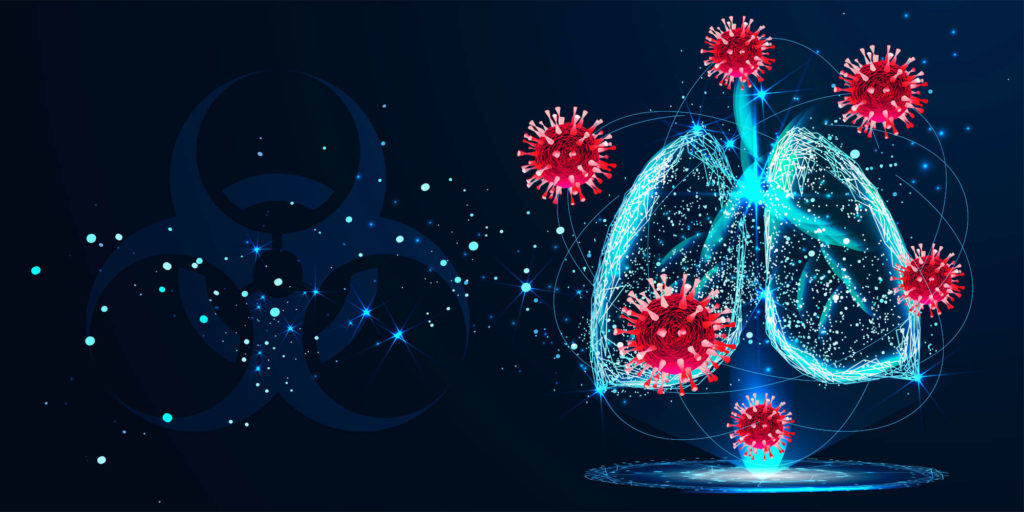With the increased use of cleaning products and disinfectants, it is important to consider if there might be any adverse side effects of such substances. Chang et al. (2020) found that since the start of the pandemic, calls to poison centers in the United States for exposure to cleaners and disinfectants have increased by 20% compared to last year1. With some possible association, it is thus critical to look at scientific literature to understand what the effects of these products actually are. Are they doing more harm than good?
Zock et al. (2007) specifically investigated common household cleaners and their effect on the respiratory system2. Using face-to-face interviews and doctors’ diagnoses, the researchers found that using cleaning products weekly was positively correlated with the incidence of asthma and asthma-related symptoms such as wheezing2. They found that symptoms worsened with an increased use of cleaning sprays, but these effects were not seen for non-aerosol cleaning products2. Weinmann et al. (2017) also looked at household cleaning products and the incidence of asthma3. Using a different population, the researchers found the same results: increased use of cleaning sprays or disinfectants was correlated with twice the asthma incidence rate3. However, these health effects were not just limited to cleaning sprays, but also included disinfectant products3.
Another effect of these products seems to be skin irritation. Slotosch et al. (2007) found a causal relationship between the use of detergent cleaning products and skin irritation4. Using a patch test and wash test to mimic the use of disinfectants and cleaning products by healthcare workers, Slotosch et al. (2007) found that detergent cleaning products led to increased skin irritation, while alcohol-based disinfectants produced little to no skin irritation4. These results were also seen in Pedersen et al. (2005), who found that alcohol-based disinfectants can still produce minimal skin irritation5.
Looking more generally at cleaning products, Gerster et al. (2014) identified the chemical components that were often hazardous or irritating to the eyes, skin, and respiratory tract6. The researchers found that up to 75% of common cleaning products contain irritants, which poses a threat specifically to those who are most frequently exposed to these chemicals such as cleaners or healthcare workers6. Chemicals such as glycol ethers and ethanolamines were often involved in producing respiratory effects like wheezing, while more acidic chemicals were involved in skin irritation6.
For years, there have been reports of cleaning products and disinfectants leading to skin irritations or respiratory issues, and with the current pandemic, these effects are even more dangerous. However, much of the current literature is not specific enough to home products, and is largely correlational, making it difficult for the general public to understand the health effects of the more common household cleaning products and disinfectants. Regardless, while additional, more specific research is required, the majority of current scientific literature does put forth the idea that increased use of cleaning products is hazardous to general health.
References:
(1) Chang A, Schnall AH, Law R, et al. Cleaning and Disinfectant Chemical Exposures and Temporal Associations with COVID-19 — National Poison Data System, United States, January 1, 2020–March 31, 2020. MMWR Morb Mortal Wkly Rep 2020; 69:496–498. DOI: http://dx.doi.org/10.15585/mmwr.mm6916e1
(2) Zock JP, Plana E, Jarvis D, et al. The use of household cleaning sprays and adult asthma: an international longitudinal study. Am J Respir Crit Care Med. 2007; 176(8):735-741. doi:10.1164/rccm.200612-1793OC
(3) Weinmann T, Gerlich J, Heinrich S, et al. Association of household cleaning agents and disinfectants with asthma in young German adults. Occup Environ Med. 2017; 74(9):684-690. doi:10.1136/oemed-2016-104086
(4) Slotosch CM, Kampf G, Löffler H. Effects of disinfectants and detergents on skin irritation. Contact Dermatitis. 2007; 57(4):235-241. doi:10.1111/j.1600-0536. 2007. 01200.x
(5) Pedersen LK, Held E, Johansen JD, Agner T. Short-term effects of alcohol-based disinfectant and detergent on skin irritation. Contact Dermatitis. 2005; 52(2): 82-87. doi:10.1111/j.0105-1873. 2005. 00504.x
(6) Gerster FM, Vernez D, Wild PP, Hopf NB. Hazardous substances in frequently used professional cleaning products. Int J Occup Environ Health. 2014; 20(1):46-60.doi:10.1179/2049396713Y.0000000052
